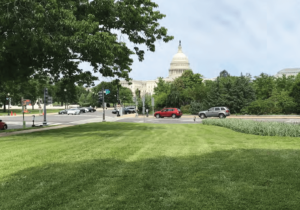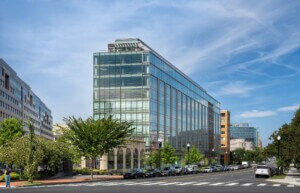Following the violent January 6 breach of the United States Capitol by domestic terrorists, 7-foot-tall fences were installed around the perimeter of the storied complex that comprises the legislative heart of the U.S. government. Washington, D.C., residents were assured that the non-scalable security fences were a temporary measure—and at the time, they provided a certain level of comfort to a city shaken and on high alert following a chaotic melee that prompted the unprecedented second impeachment trial of former President Donald Trump, who has now been accused as being the “inciter in chief” of the insurrection.
Fast-forward three weeks to January 28 when Yogananda D. Pittman, acting chief of the Capitol Police, issued a statement suggesting that the perimeter fencing, which was to remain in place for at least 30 days per then-Army Secretary Ryan McCarthy, could potentially be a permanent fixture as part of a larger effort to fortify the complex.
“We all have the same goal—to prevent what occurred on January 6 from ever happening again,” said Pittman in the statement. “In light of recent events, I can unequivocally say that vast improvements to the physical security infrastructure must be made.”
Now that the 30-day-period has passed and the fencing still remains up, Congresswoman Eleanor Holmes Norton, who serves as D.C.’s non-voting delegate in the House of Representatives, has announced plans to introduce legislation that would prohibit the fencing in question from gaining permanence.
“In the year 2021, we should not be relying on security theater based on 19th-century ideas when state-of-the-art options and old-fashioned preparation and cooperation among security forces could have prevented the events of January 6,” wrote Norton. “My bill banning permanent fencing will help put the needed focus back on security options that don’t wall off the Capitol like a fortress that needs to be protected from the people we represent.”
“I’ve been in touch with Acting U.S. Capitol Police (USCP) Chief Yogananda Pittman over the phone and in writing strongly opposing her recommendation for permanent fencing,” added Norton.
Norton is certainly not alone in her sentiments. The pushback against Pittman’s idea has been both swift and bipartisan in nature. Washington, D.C., Mayor Muriel Bowser is among the officials who have joined Norton in rejecting the notion of keeping the fencing up permanently, saying that the city would not accept that, or the presence of extra troops, as “as a long-term fixture in DC.”
“When the time is right, the fencing around the White House and U.S. Capitol, just like the plywood we’ve seen on our businesses for too long, will be taken down,” tweeted Bowser on January 28.
As noted by Philip Kennicott, art and architecture critic for the Washington Post, the January 6 insurrection happened not because there wasn’t already fencing or other security-minded infrastructure in place around the Capitol building, which he calls a “bit of a hodgepodge, the product of more than two centuries of additions and renovations, incorporating the ideas and vision of multiple architects.” Although blaming the democratic, approachable-by-design nature of the so-called People’s House is certainly easy, transforming the entire complex into an impenetrable fortress after the fact won’t change the fact that the insurrection, as Kennicott sees it, transpired wholly because of human failure:
“Investigations are ongoing, but it’s already clear this was a tragedy of incompetent leadership, failed intelligence and a giant mess of missed or crossed communications. And yet some of the people involved in the debacle may be instrumental in deciding on security measures.
The short-lived insurrection was planned and executed in public. There was no doubt it was coming. There was no uncertainty about the toxic ambitions of the men and women who led the mob. They made it all clear on social media. And there was never any doubt that Trump was capable of and willing to incite the crowd. The fail-safe way to predict what Trump would do was to imagine the worst that he might do and assume he’d do just that.”
The Editorial Board of the New York Times published an opinion piece expressing similar unease about the prospect of keeping the fencing up permanently, saying that the “hastily installed” fencing has “transformed the Capitol into a symbol of the nation’s fears.”
The Editorial Board continued:
“The attack on the Capitol is sobering evidence of the need for stronger measures to protect members of Congress and the work of government. It cannot be dismissed as an aberration. But a permanent barrier is an inappropriate corrective.
The attack on the Capitol could have been prevented or mitigated in severity by the timely deployment of an adequate number of police officers and National Guard troops— in effect, a temporary barrier. Any similar threats in the future can and should be met in the same manner. The basic failure was one of policing. It was not a failure of architecture.”
Pittman, who is facing a vote of no confidence this week, has not publicly responded to the pushback or reversed course regarding her suggestion about keeping the fencing up permanently. However, her initial statement did not that she is looking forward to “working with Congress on identifying the security improvements necessary to ensure the safety and security of the Congress and the U.S. Capitol.”











